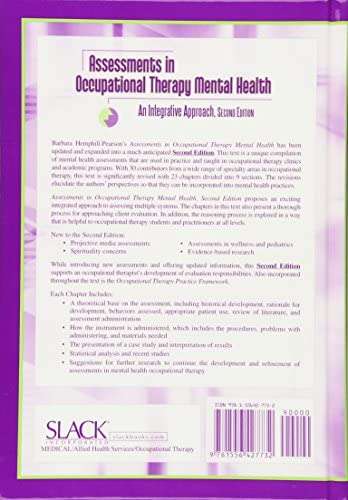
Current treatments for autism spectrum disorder (ASD) seek to reduce symptoms that interfere with daily functioning and quality of life.1 ASD affects each person differently, meaning that people with ASD have unique strengths and challenges and different treatment needs.1 Therefore, treatment plans usually involve multiple professionals and are catered toward the individual.
Treatments can be given in education, health, community, or home settings, or a combination of settings. It is important that providers communicate with each other and the person with ASD and their family to ensure that treatment goals and progress are meeting expectations.
As individuals with ASD exit from high school and grow into adulthood, additional services can help improve health and daily functioning, and facilitate social and community engagement. For some, supports to continue education, complete job training, find employment, and secure housing and transportation may be needed.
Types of Treatments
There are many types of treatments available. These treatments generally can be broken down into the following categories, although some treatments involve more than one approach:
Behavioral Approaches
Behavioral approaches focus on changing behaviors by understanding what happens before and after the behavior. Behavioral approaches have the most evidence for treating symptoms of ASD. They have become widely accepted among educators and healthcare professionals and are used in many schools and treatment clinics. A notable behavioral treatment for people with ASD is called Applied Behavior Analysis (ABA). ABA encourages desired behaviors and discourages undesired behaviors to improve a variety of skills. Progress is tracked and measured.
Two ABA teaching styles are Discrete Trial Training (DTT) and Pivotal Response Training (PRT).
- DTT uses step-by-step instructions to teach a desired behavior or response. Lessons are broken down into their simplest parts, and desired answers and behaviors are rewarded. Undesired answers and behaviors are ignored.
- PRT takes place in a natural setting rather than clinic setting. The goal of PRT is to improve a few “pivotal skills” that will help the person learn many other skills. One example of a pivotal skill is to initiate communication with others.
Developmental Approaches
Developmental approaches focus on improving specific developmental skills, such as language skills or physical skills, or a broader range of interconnected developmental abilities. Developmental approaches are often combined with behavioral approaches.
The most common developmental therapy for people with ASD is Speech and Language Therapy. Speech and Language Therapy helps to improve the person’s understanding and use of speech and language. Some people with ASD communicate verbally. Others may communicate through the use of signs, gestures, pictures, or an electronic communication device.
Occupational Therapy teaches skills that help the person live as independently as possible. Skills may include dressing, eating, bathing, and relating to people. Occupational therapy can also include:
- Sensory Integration Therapy to help improve responses to sensory input that may be restrictive or overwhelming.
- Physical Therapy can help improve physical skills, such as fine movements of the fingers or larger movements of the trunk and body.
The Early Start Denver Model (ESDM) is a broad developmental approach based on the principles of Applied Behavior Analysis. It is used with children 12-48 months of age. Parents and therapists use play, social exchanges, and shared attention in natural settings to improve language, social, and learning skills.
Educational Approaches
Educational treatments are given in a classroom setting. One type of educational approach is the Treatment and Education of Autistic and Related Communication-Handicapped Children (TEACCH) approach. TEACCH is based on the idea that people with autism thrive on consistency and visual learning. It provides teachers with ways to adjust the classroom structure and improve academic and other outcomes. For example, daily routines can be written or drawn and placed in clear sight. Boundaries can be set around learning stations. Verbal instructions can be complimented with visual instructions or physical demonstrations.
Social-Relational Approaches
Social-relational treatments focus on improving social skills and building emotional bonds. Some social-relational approaches involve parents or peer mentors.
- The Developmental, Individual Differences, Relationship-Based model (also called “Floor time”) encourages parents and therapists to follow the interests of the individual to expand opportunities for communication.
- The Relationship Development Intervention (RDI) model involves activities that increase motivation, interest, and abilities to participate in shared social interactions.
- Social Stories provide simple descriptions of what to expect in a social situation.
- Social Skills Groups provide opportunities for people with ASD to practice social skills in a structured environment.
Pharmacological Approaches
There are no medications that treat the core symptoms of ASD. Some medications treat co-occurring symptoms that can help people with ASD function better. For example, medication might help manage high energy levels, inability to focus, or self-harming behavior, such as head banging or hand biting. Medication can also help manage co-occurring psychological conditions, such as anxiety or depression, in addition to medical conditions such as seizures, sleep problems, or stomach or other gastrointestinal problems.
It is important to work with a doctor who has experience in treating people with ASD when considering the use of medication. This applies to both prescription medication and over-the-counter medication. Individuals, families, and doctors must work together to monitor progress and reactions to be sure that negative side effects of the medication do not outweigh the benefits.
Psychological Approaches
Psychological approaches can help people with ASD cope with anxiety, depression, and other mental health issues. Cognitive-Behavior Therapy (CBT) is one psychological approach that focuses on learning the connections between thoughts, feelings, and behaviors. During CBT, a therapist and the individual work together to identify goals and then change how the person thinks about a situation to change how they react to the situation.
Complementary and Alternative Treatments
Some individuals and parents use treatments that do not fit into any of the other categories. These treatments are known as Complementary and Alternative treatments. Complementary and alternative treatments are often used to supplement more traditional approaches. They might include special diets, herbal supplements, chiropractic care, animal therapy, arts therapy, mindfulness, or relaxation therapies. Individuals and families should always talk to their doctor before starting a complementary and alternative treatment.
There may be other treatments available for individuals with ASD. Talk to a doctor or healthcare provider to learn more.
For more information you can visit:
American Academy of Pediatrics Council on Children with Disabilities: https://pediatrics.aappublications.org/content/145/1/e20193447external icon
Autism Society: https://www.autism-society.org/living-with-autism/treatment-options/external icon
Autism Speaks: https://www.autismspeaks.org/treatments-autismexternal icon
Interagency Autism Coordinating Committee: https://iacc.hhs.gov/publications/publications-analysis/2012/treatments.shtmlexternal icon
National Institute on Child Health and Human Development: https://www.nichd.nih.gov/health/topics/autism/conditioninfo/treatmentsexternal icon
References
- Hyman, S.L., Levy, S.E., Myers, S.M., & AAP Council on Children with Disabilities, Section on developmental and behavioral pediatrics. (2020). Identification, evaluation, and management of children with autism spectrum disorder. Pediatrics, 145(1), e20193447.
Diagnosis
Your child’s doctor will look for signs of developmental delays at regular checkups. If your child shows any symptoms of autism spectrum disorder, you’ll likely be referred to a specialist who treats children with autism spectrum disorder, such as a child psychiatrist or psychologist, pediatric neurologist, or developmental pediatrician, for an evaluation.
Because autism spectrum disorder varies widely in symptoms and severity, making a diagnosis may be difficult. There isn’t a specific medical test to determine the disorder. Instead, a specialist may:
- Observe your child and ask how your child’s social interactions, communication skills and behavior have developed and changed over time
- Give your child tests covering hearing, speech, language, developmental level, and social and behavioral issues
- Present structured social and communication interactions to your child and score the performance
- Use the criteria in the Diagnostic and Statistical Manual of Mental Disorders (DSM-5), published by the American Psychiatric Association
- Include other specialists in determining a diagnosis
- Recommend genetic testing to identify whether your child has a genetic disorder such as Rett syndrome or fragile X syndrome
Treatment
No cure exists for autism spectrum disorder, and there is no one-size-fits-all treatment. The goal of treatment is to maximize your child’s ability to function by reducing autism spectrum disorder symptoms and supporting development and learning. Early intervention during the preschool years can help your child learn critical social, communication, functional and behavioral skills.
The range of home-based and school-based treatments and interventions for autism spectrum disorder can be overwhelming, and your child’s needs may change over time. Your health care provider can recommend options and help identify resources in your area.
If your child is diagnosed with autism spectrum disorder, talk to experts about creating a treatment strategy and build a team of professionals to meet your child’s needs.
Treatment options may include:
- Behavior and communication therapies. Many programs address the range of social, language and behavioral difficulties associated with autism spectrum disorder. Some programs focus on reducing problem behaviors and teaching new skills. Other programs focus on teaching children how to act in social situations or communicate better with others. Applied behavior analysis (ABA) can help children learn new skills and generalize these skills to multiple situations through a reward-based motivation system.
- Educational therapies. Children with autism spectrum disorder often respond well to highly structured educational programs. Successful programs typically include a team of specialists and a variety of activities to improve social skills, communication and behavior. Preschool children who receive intensive, individualized behavioral interventions often show good progress.
- Family therapies. Parents and other family members can learn how to play and interact with their children in ways that promote social interaction skills, manage problem behaviors, and teach daily living skills and communication.
- Other therapies. Depending on your child’s needs, speech therapy to improve communication skills, occupational therapy to teach activities of daily living, and physical therapy to improve movement and balance may be beneficial. A psychologist can recommend ways to address problem behavior.
- Medications. No medication can improve the core signs of autism spectrum disorder, but specific medications can help control symptoms. For example, certain medications may be prescribed if your child is hyperactive; antipsychotic drugs are sometimes used to treat severe behavioral problems; and antidepressants may be prescribed for anxiety. Keep all health care providers updated on any medications or supplements your child is taking. Some medications and supplements can interact, causing dangerous side effects.
Managing other medical and mental health conditions
In addition to autism spectrum disorder, children, teens and adults can also experience:
- Medical health issues. Children with autism spectrum disorder may also have medical issues, such as epilepsy, sleep disorders, limited food preferences or stomach problems. Ask your child’s doctor how to best manage these conditions together.
- Problems with transition to adulthood. Teens and young adults with autism spectrum disorder may have difficulty understanding body changes. Also, social situations become increasingly complex in adolescence, and there may be less tolerance for individual differences. Behavior problems may be challenging during the teen years.
- Other mental health disorders. Teens and adults with autism spectrum disorder often experience other mental health disorders, such as anxiety and depression. Your doctor, mental health professional, and community advocacy and service organizations can offer help.
Planning for the future
Children with autism spectrum disorder typically continue to learn and compensate for problems throughout life, but most will continue to require some level of support. Planning for your child’s future opportunities, such as employment, college, living situation, independence and the services required for support can make this process smoother.
More Information
- Cognitive behavioral therapy
Clinical trials
Explore Mayo Clinic studies testing new treatments, interventions and tests as a means to prevent, detect, treat or manage this condition.
Alternative medicine
Because autism spectrum disorder can’t be cured, many parents seek alternative or complementary therapies, but these treatments have little or no research to show that they’re effective. You could, unintentionally, reinforce negative behaviors. And some alternative treatments are potentially dangerous.
Talk with your child’s doctor about the scientific evidence of any therapy that you’re considering for your child.
Examples of complementary and alternative therapies that may offer some benefit when used in combination with evidence-based treatments include:
- Creative therapies. Some parents choose to supplement educational and medical intervention with art therapy or music therapy, which focuses on reducing a child’s sensitivity to touch or sound. These therapies may offer some benefit when used along with other treatments.
- Sensory-based therapies. These therapies are based on the unproven theory that people with autism spectrum disorder have a sensory processing disorder that causes problems tolerating or processing sensory information, such as touch, balance and hearing. Therapists use brushes, squeeze toys, trampolines and other materials to stimulate these senses. Research has not shown these therapies to be effective, but it’s possible they may offer some benefit when used along with other treatments.
- Massage. While massage may be relaxing, there isn’t enough evidence to determine if it improves symptoms of autism spectrum disorder.
- Pet or horse therapy. Pets can provide companionship and recreation, but more research is needed to determine whether interaction with animals improves symptoms of autism spectrum disorder.
Some complementary and alternative therapies may not be harmful, but there’s no evidence that they’re helpful. Some may also include significant financial cost and be difficult to implement. Examples of these therapies include:
- Special diets. There’s no evidence that special diets are an effective treatment for autism spectrum disorder. And for growing children, restrictive diets can lead to nutritional deficiencies. If you decide to pursue a restrictive diet, work with a registered dietitian to create an appropriate meal plan for your child.
- Vitamin supplements and probiotics. Although not harmful when used in normal amounts, there is no evidence they are beneficial for autism spectrum disorder symptoms, and supplements can be expensive. Talk to your doctor about vitamins and other supplements and the appropriate dosage for your child.
- Acupuncture. This therapy has been used with the goal of improving autism spectrum disorder symptoms, but the effectiveness of acupuncture is not supported by research.
Some complementary and alternative treatments do not have evidence that they are beneficial and they’re potentially dangerous. Examples of complementary and alternative treatments that are not recommended for autism spectrum disorder include:
- Chelation therapy. This treatment is said to remove mercury and other heavy metals from the body, but there’s no known link with autism spectrum disorder. Chelation therapy for autism spectrum disorder is not supported by research evidence and can be very dangerous. In some cases, children treated with chelation therapy have died.
- Hyperbaric oxygen treatments. Hyperbaric oxygen is a treatment that involves breathing oxygen inside a pressurized chamber. This treatment has not been shown to be effective in treating autism spectrum disorder symptoms and is not approved by the Food and Drug Administration (FDA) for this use.
- Intravenous immunoglobulin (IVIG) infusions. There is no evidence that using IVIG infusions improves autism spectrum disorder, and the FDA has not approved immunoglobulin products for this use.
Coping and support
Raising a child with autism spectrum disorder can be physically exhausting and emotionally draining. These suggestions may help:
- Find a team of trusted professionals. A team, coordinated by your doctor, may include social workers, teachers, therapists, and a case manager or service coordinator. These professionals can help identify and evaluate the resources in your area and explain financial services and state and federal programs for children and adults with disabilities.
- Keep records of visits with service providers. Your child may have visits, evaluations and meetings with many people involved in his or her care. Keep an organized file of these meetings and reports to help you decide about treatment options and monitor progress.
- Learn about the disorder. There are many myths and misconceptions about autism spectrum disorder. Learning the truth can help you better understand your child and his or her attempts to communicate.
- Take time for yourself and other family members. Caring for a child with autism spectrum disorder can put stress on your personal relationships and your family. To avoid burnout, take time out to relax, exercise or enjoy your favorite activities. Try to schedule one-on-one time with your other children and plan date nights with your spouse or partner — even if it’s just watching a movie together after the children go to bed.
- Seek out other families of children with autism spectrum disorder. Other families struggling with the challenges of autism spectrum disorder may have useful advice. Some communities have support groups for parents and siblings of children with the disorder.
- Ask your doctor about new technologies and therapies. Researchers continue to explore new approaches to help children with autism spectrum disorder. See the Centers for Disease Control and Prevention website on autism spectrum disorders for helpful materials and links to resources.
Preparing for your appointment
Your child’s health care provider will look for developmental problems at regular checkups. Mention any concerns you have during your appointment. If your child shows any signs of autism spectrum disorder, you’ll likely be referred to a specialist who treats children with the disorder for an evaluation.
Bring a family member or friend with you to the appointment, if possible, to help you remember information and for emotional support.
Here’s some information to help you prepare for your appointment.
What you can do
Before your child’s appointment, make a list of:
- Any medications, including vitamins, herbs and over-the-counter medicines that your child is taking, and their dosages.
- Any concerns you have about your child’s development and behavior.
- When your child began talking and reaching developmental milestones. If your child has siblings, also share information about when they reached their milestones.
- A description of how your child plays and interacts with other children, siblings and parents.
- Questions to ask your child’s doctor to make the most of your time.
In addition, it may be helpful to bring:
- Notes of any observations from other adults and caregivers, such as babysitters, relatives and teachers. If your child has been evaluated by other health care professionals or an early intervention or school program, bring this assessment.
- A record of developmental milestones for your child, such as a baby book or baby calendar, if you have one.
- A video of your child’s unusual behaviors or movements, if you have one.
Questions to ask your child’s doctor may include:
- Why do you think my child does (or doesn’t) have autism spectrum disorder?
- Is there a way to confirm the diagnosis?
- If my child does have autism spectrum disorder, is there a way to tell how severe it is?
- What changes can I expect to see in my child over time?
- What kind of special therapies or care do children with autism spectrum disorder need?
- How much and what kinds of regular medical care will my child need?
- What kind of support is available to families of children with autism spectrum disorder?
- How can I learn more about autism spectrum disorder?
Don’t hesitate to ask other questions during your appointment.
What to expect from your child’s doctor
Your child’s doctor is likely to ask you a number of questions. Be ready to answer them to reserve time to go over any points you want to focus on. Your doctor may ask:
- What specific behaviors prompted your visit today?
- When did you first notice these signs in your child? Have others noticed signs?
- Have these behaviors been continuous or occasional?
- Does your child have any other symptoms that might seem unrelated to autism spectrum disorder, such as stomach problems?
- Does anything seem to improve your child’s symptoms?
- What, if anything, appears to worsen symptoms?
- When did your child first crawl? Walk? Say his or her first word?
- What are some of your child’s favorite activities?
- How does your child interact with you, siblings and other children? Does your child show interest in others, make eye contact, smile or want to play with others?
- Does your child have a family history of autism spectrum disorder, language delay, Rett syndrome, obsessive-compulsive disorder, or anxiety or other mood disorders?
- What is your child’s education plan? What services does he or she receive through school?




